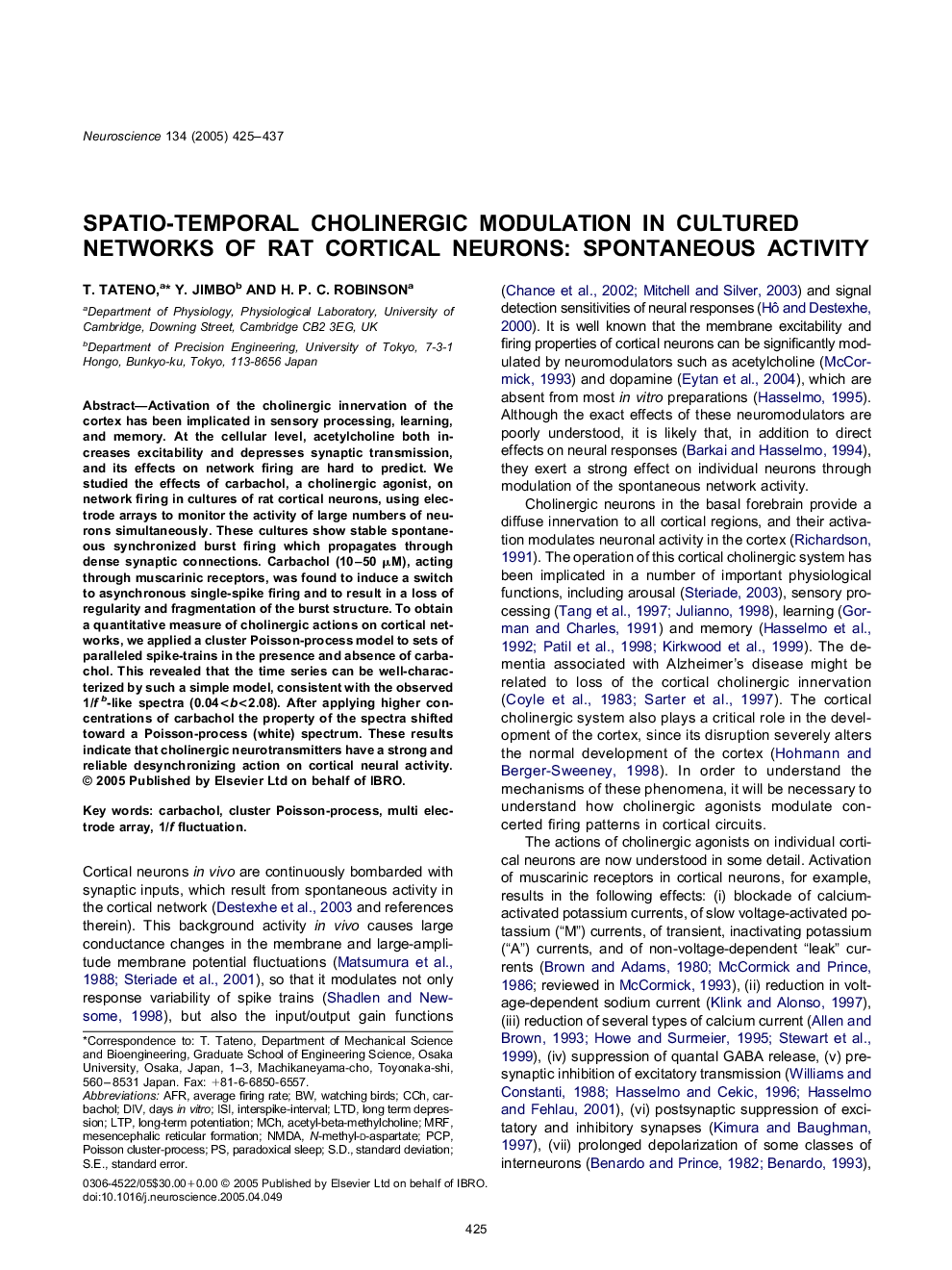| Article ID | Journal | Published Year | Pages | File Type |
|---|---|---|---|---|
| 9425726 | Neuroscience | 2005 | 13 Pages |
Abstract
Activation of the cholinergic innervation of the cortex has been implicated in sensory processing, learning, and memory. At the cellular level, acetylcholine both increases excitability and depresses synaptic transmission, and its effects on network firing are hard to predict. We studied the effects of carbachol, a cholinergic agonist, on network firing in cultures of rat cortical neurons, using electrode arrays to monitor the activity of large numbers of neurons simultaneously. These cultures show stable spontaneous synchronized burst firing which propagates through dense synaptic connections. Carbachol (10-50μM), acting through muscarinic receptors, was found to induce a switch to asynchronous single-spike firing and to result in a loss of regularity and fragmentation of the burst structure. To obtain a quantitative measure of cholinergic actions on cortical networks, we applied a cluster Poisson-process model to sets of paralleled spike-trains in the presence and absence of carbachol. This revealed that the time series can be well-characterized by such a simple model, consistent with the observed 1/f b-like spectra (0.04
Keywords
Related Topics
Life Sciences
Neuroscience
Neuroscience (General)
Authors
T. Tateno, Y. Jimbo, H.P.C. Robinson,
